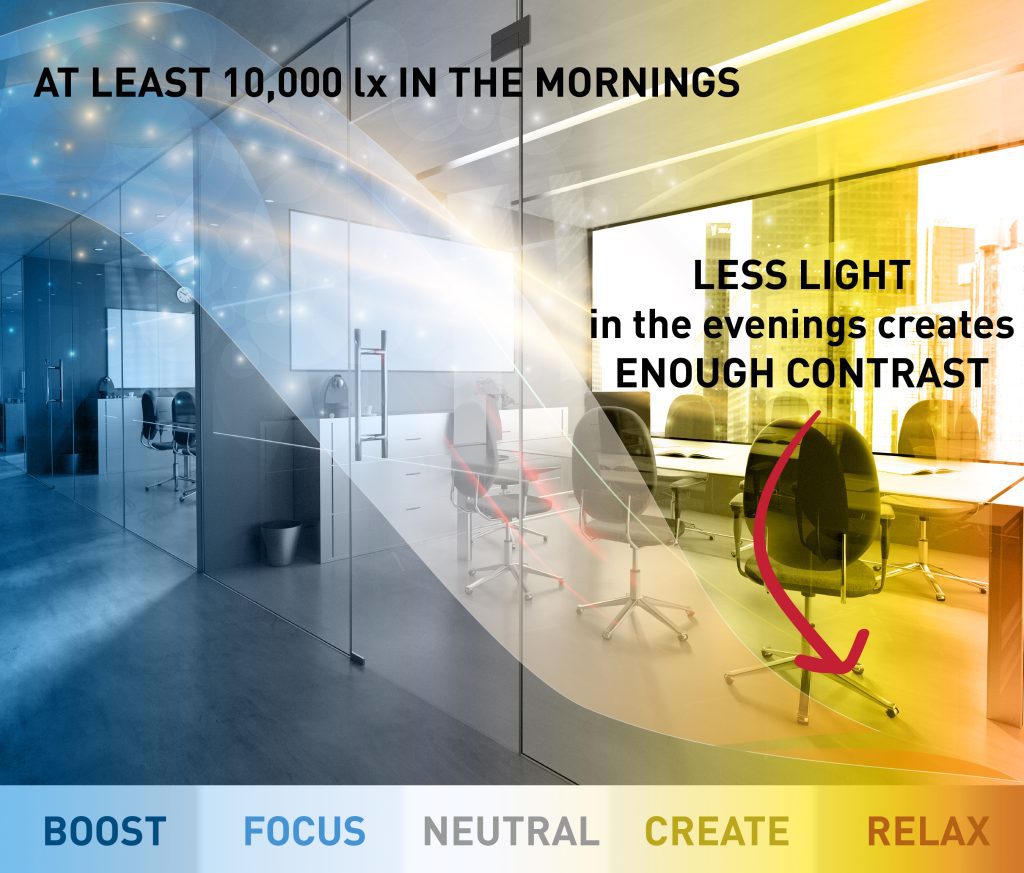In more recent years, we’ve adapted to spending almost 90% of our time indoors and in the workplace. This lifestyle change means that we typically spend less time in natural light, so this has a huge impact on our circadian rhythms – our natural body clock that is responsible for our daily sleep-wake routine. This rhythm is heavily reliant on the amount of light reaching our eyes.
Helvar is a leading provider of intelligent lighting control products and solutions and understands the impact light has on people’s wellbeing and functionality. The workplace’s human-centric lighting is the easiest way to support employees’ wellbeing, performance, and circadian rhythm, and thus prevent winter blues and seasonal affective disorder (SAD).
As many studies show, light affects complex systems that govern the 24-hour circadian clock in the brain, which regulates not just our sleep-wake cycles, but also hormonal activity, digestion, and other important bodily functions. Lighting has a direct impact on our brain and our hormone balance via the retina in our eyes. The contrast, colour temperatures and effective spectrum in light are key to our circadian rhythm.
If we don’t receive enough light, the happiness neurotransmitter serotonin isn’t released to the same extent. While this can be just a transitory case of the winter blues, for some it’s a sign of SAD with symptoms similar to depression. Studies suggest that 20% of us might experience a mild version of the winter blues, while 1-5% might be suffering from SAD due to the shortening in day length and lower light intensity.
The winter’s shorter days and lack of sunshine and natural bright blue light affect people in the Northern latitudes. During the winter months, people leave their homes in the dark and then commute home again, in the dark. If they also spend all day in a workplace without enough bright light, it can affect most people’s dispositions.
“Ideally, to keep or reset our circadian rhythm, we would receive lots of natural, bright, blue-enriched light at the right time of the morning. The open sky’s light intensities range between 10 000 and even greater than 100 000 lux with 4000-6500 Kelvin (pure white to bright blue colour temperatures). During the darker winter period in the Northern latitudes, this is not the case. Also, the lighting levels in an average working area can be a marginal 300-500 lux. This light intensity doesn’t provide enough bright light and contrasting lighting conditions during the working day. As people spend most of their time indoors e.g. at work, these places should support people’s wellbeing and body-clock needs – provide good quality light with variability to counter the effects causing winter blues or SAD during the darker periods”, describes Helvar’s Marketing Manager Tarja Jokiniemi in her blog about Winter Blues and Workplace Lighting.
In the Helvar 100 – Discovering Brighter Spaces Event, Performance Scientist James Hewitt shared his findings on good lighting and circadian rhythm: “Inconsistent light-dark cycles related to our lifestyles mean that we are gradually falling more and more out of sync with our environment. In fact, in industrialised societies, our body clocks are becoming more delayed. We feel like it’s earlier relative to the earth’s day-night cycle, which means that it’s more challenging to wake up in the morning and harder to get to sleep at night. This delay might be explained by weaker Zeitgeber time cues related to a smaller contrast between light and dark in our environment.”
Fixed, traditional lighting isn’t designed to support our wellbeing. It lacks the ability to tune lighting levels throughout the day as optimal lighting conditions would also require variation in hues and intensity. Helvar’s modern human-centric lighting controls, however, offer dynamic lighting features including brightness and colour temperature controls. By incorporating these dynamic features in a workplace, a human-centric lighting system more accurately emulates natural light, therefore supporting the circadian rhythms of everyone using the space.
To read the whole story, click here.




Building, Design and Construction Magazine | The Choice of Industry Professionals





